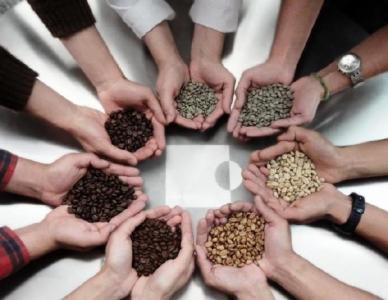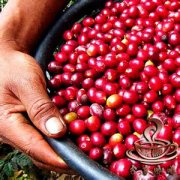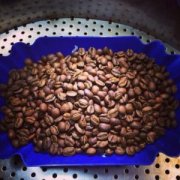A brief introduction to the Market Price of Fine Coffee Bean varieties in Fuyin Manor

Later, when ships replaced sailboats, people drank fresher coffee beans because of shorter delivery times. But people accustomed to old beans are not used to this fresh taste, so they desperately pursue old Java coffee, so that the Indonesian government and some businessmen deliberately store fresh beans in warehouses for one to two years before selling them to consumers. In fact, the acidity of aged Java beans is reduced to nearly zero compared to fresh beans, while the aroma is more intense. Because of the long storage time, the cost increases a lot, and the quantity is limited, so aged Java has always been a hot commodity in the coffee market. In the 1880s, some traders deliberately tampered with fresh Guatemala or Venezuela beans to copy old Java and sell them at high prices. What is intolerable is that 0 traders dye coffee beans in a way that makes them look more like aged java, but there is no doubt that the dyeing chemicals are poisonous.
Java produces only a small number of arabica beans, most of which are Romstar beans imported from Africa after the rust disaster. This coffee is bitter after roasting, but the aroma is extremely light. Although the acidity is low and the taste is relatively delicate, it is rarely used for direct drinking. It is often used to blend with mixed coffee or to make instant coffee. Java coffee is produced in Java Island, Indonesia, and belongs to Arabica coffee. After baking, the bitter taste is very strong and the fragrance is very light, without sourness. Java coffee bitter, alcohol, coupled with the sweet chocolate syrup, Java coffee more mellow smooth, very popular with women!
Among the coffee-producing Asian countries, Indonesia is one of the most noteworthy. Indonesia is an island country in the Indian Ocean, with islands on both sides of the equator, three of which: Java, Sumatra and Sulawesi produce globally important coffee. In the mid-17th century, the Dutch brought coffee trees to Ceylon (Sri Lanka) and Java in Indonesia. By the 18th century, Indonesia had become a major producer of coffee, supplying almost all of its high-quality Arabica coffee to Europe. But in the 19th century, coffee rust, which appeared in Ceylon as early as 1869, also affected Indonesia. By 1877, most of the coffee fields on the Indonesian islands had been destroyed by rust, and the Dutch had to import another coffee variety from Africa, namely Romstar coffee. It is more resistant to pests and diseases, but the quality is inferior. About 90% of Indonesian coffee is Romstar beans, about 6.8 million bags a year, less than 10% of the beans are Arabica coffee Java Island, the oldest producing area, Java coffee's reputation continues from the 18th century Indonesian coffee glory era, mention Java coffee, still can be associated with high quality delicious, then the most famous blend is to Java coffee with Yemen mocha. In addition, Java has a famous aged coffee, or monsoon coffee.
Sumatra Island, the most legendary producing area, famous coffee labels include Mandheling, Lintong, Gayo Mountain.
In Sulawesi, famous coffees include Traga Toraja.
In addition, Bali, Flores, Timor are also important production areas.
Coffee growing methods
During the Dutch colonial era, coffee cultivation was dominated by large manors. After World War II, it experienced nationalization and independence movement. Today, about 90% of Indonesia's coffee production is produced by small farmers.
coffee varieties
Overall, Indonesian coffee is strong, mellow, slightly syrupy, and has excellent acidity, reflecting its excellent quality in that its two main export markets are Germany and Japan. What appeals to consumers is the exceptional quality of its arabic coffee beans. You can add milk or cream to high-quality Indonesian coffee without worrying about affecting its taste. Indonesian coffee is divided into six grades, the best is AP. But no one knows exactly what these two capital letters represent.
Initially, Indonesian coffee was Arabica, but leaf rust destroyed Arabica plantations in the late 18th century. Initially, the Dutch tried to grow Liberian coffee, and later, large-scale cultivation of Robusta coffee began.
Arabica now accounts for about 10-15% of Indonesia's coffee production, with Robusta making the rest. Liberica is produced but largely excluded from the coffee trade
Sumatra, Indonesia's second largest island, is the center of Indonesia's oil industry. Rubber and timber on the island are also famous export commodities. Sumatra coffee, however, is more striking, similar to Java coffee, but slightly heavier in size. Mandheling and Ankola coffee beans are also highly valued, the former even being hailed as the world's most granular coffee beans.
Sulawesi, located between Borneo and New Guinea, is sometimes referred to as Celebes. The coffee produced on the island is full of particles and rich in flavor. The best coffee beans are grown in Kalossi and Rantepao in the south of the island. Among the many tastes, try Celebes Carlochy Coffee.
When ships replaced sailboats, coffee from these islands faced the same problem as Indian coffee from Mysore-that consumers were used to coffee affected by long journeys and were reluctant to accept the taste of "fresh" coffee. To solve this problem, the Indonesian government has tried to imitate coffee affected by long trips, and they have "stored" coffee beans for up to a year. However, the taste of this moist coffee is not widely accepted, so that it affects the good reputation of coffee.
However, Indonesian "storage" coffee or "journey" coffee is still produced today. It is sold under the brand names Old Government, Old Brown and Ool Java.
Although Indonesia produces so much good coffee, it is puzzling that the local population prefers Turkish coffee to its famous European coffee, which was introduced to Indonesia by the Dutch in the mid-17th century (some official sources believe earlier). 1712 The first coffee from Java arrives in Amsterdam. However, in 1877 coffee trees on all plantations were destroyed by coffee rust, and robert coffee trees had to be imported from Africa to replace the original species. Today only 6 -10% of coffee beans are Arabica beans. Indonesia is the world's leading producer of Roscoff coffee, producing 6.8 million bags of coffee annually, most of which comes from small plantations, accounting for about 90% of total production.
Java produces fine aromatic coffee with relatively low acidity, fine taste and good balance. Java coffee has a superior aroma and acidity to Sumatra and Sulawesi coffees. The best plantations in Java are Blawan, Jambit, Kayumas and Pankur. Java mocha coffee is a blend of Java coffee and Yemeni mocha coffee.
Sumatra, Indonesia's second largest island, is the center of Indonesia's oil industry. Rubber and timber on the island are also famous export commodities. Sumatra coffee, however, is more striking, similar to Java coffee, but slightly heavier in size. Mandheling and Ankola coffee beans are also highly valued, with Mandheling even being hailed as the world's most granular coffee beans
Java coffee beans early years of Java coffee fame, here refers to the former Java produced Arabica coffee. It has a rich aroma, low acidity, smooth taste, and with mocha coffee, the result is "Java mocha blend coffee" once popular, synonymous with top coffee, fame spread.
Java coffee sold to Europe at that time was a very special coffee. Because it was shipped to European and American countries by sailboat at that time, the journey was long and the speed was slow, so it took a lot of time on the way. Coffee in this case, as if after a special fermentation, taste very unique.
Important Notice :
前街咖啡 FrontStreet Coffee has moved to new addredd:
FrontStreet Coffee Address: 315,Donghua East Road,GuangZhou
Tel:020 38364473
- Prev

A brief introduction to the Origin, Development, History and Culture of Fine Coffee beans in Fuyin Manor
Among the Asian coffee-producing countries, Indonesia is a very noteworthy one. Indonesia is an island country in the Indian Ocean, the islands are distributed on both sides of the equatorial line, of which three islands: Java, Sumatra and Sulawesi produce the world's important coffee. In the mid-17th century, the Dutch brought coffee trees to Ceylon (Sri Lanka) and Java, Indonesia. India in the 18th century
- Next

A brief introduction to the cultivation of tobacco-flavored boutique coffee beans in Fuyin Manor, geographical location, climate and altitude
Sumatra, the second largest island in the Indonesian archipelago, is the center of Indonesia's oil industry, and its rubber and timber are also famous exports. However, the coffee in Sumatra is more eye-catching, which is similar to Java coffee, but with slightly heavier grains. The coffee beans of Mandheling and Ankola are also valued, and the former is even praised.
Related
- Does Rose Summer choose Blue, Green or Red? Detailed explanation of Rose Summer Coffee plots and Classification in Panamanian Jade Manor
- What is the difference between the origin, producing area, processing plant, cooperative and manor of coffee beans?
- How fine does the espresso powder fit? how to grind the espresso?
- Sca coffee roasting degree color card coffee roasting degree 8 roasting color values what do you mean?
- The practice of lattes: how to make lattes at home
- Introduction to Indonesian Fine Coffee beans-- Java Coffee producing area of Indonesian Arabica Coffee
- How much will the flavor of light and medium roasted rose summer be expressed? What baking level is rose summer suitable for?
- Introduction to the characteristics of washing, sun-drying or wet-planing coffee commonly used in Mantenin, Indonesia
- Price characteristics of Arabica Coffee Bean Starbucks introduction to Manning Coffee Bean Taste producing area Variety Manor
- What is the authentic Yega flavor? What are the flavor characteristics of the really excellent Yejasuffi coffee beans?

